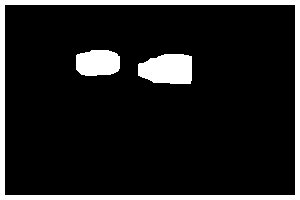Contents
Some of the pixels can be miscategorized during binarization. This can cause the fragmentation of the tracked object, noticeable by the appearance of flashing pixels in the frame. Errors such as these can be easily corrected by using the appropriate post-processing algorithms. As in the case of the filters, several algorithms can be used in combination.
By choosing the appropriate post-processor from the and clicking the button, several post-processors can be selected. The order of the post-processors can be changed using the . (The first post-processor will be implemented first.) Clicking the button brings the post-processor settings window of the given post-processor forward. Post-processors can be removed by clicking on the button.
Erode
The erode algorithm removes the outermost pixels of continuous foreground pixel areas. This algorithm is perfectly suited for the removal of groups of flashing pixels.


Dilate
The dilate algorithm has the opposite effect of the erode algorithm. This algorithm increases the perimeter of continuous pixel areas.
Open
The open algorithm consists of the multiple execution of erode followed by dilate. This algorithm is used to separate adjoining structures. Its advantage compared to erode is that it partially restores the objects’ original area.


Close
The close algorithm consists of the multiple execution of dilate followed by erode. The function of this algorithm is the fusion of fragmented structures. Its advantage compared to dilate is that it partially restores the objects’ original area.


Size filter
Using this filter, the maximum and minimum size of continuous pixel areas that are to be kept for further analysis can be set. Changing the setting to zero for either cut-off removes the size limit in that direction.